Traveling Companion: A Guide to Guidebooks
044

045
When God said to Abraham lech lecha: “Get thee out of thy country … unto the land that I will show thee” (Genesis 12:1), the Lord acted as the first known guide. Abraham then “departs” out of Haran, “passes through” Shechem, “pitches his tent” south of Beth El, and “journeys” to Egypt and back. The Bible of course is full of people going places without, as far as we know, the benefit of guidebooks.
Yet it is from the most famous journey in antiquity, the Exodus, that we have, if not quite a guidebook, at least a travel report. The spies describe Canaan as a land “which floweth with milk and honey” (Numbers 13:27), and as proof—in the days before photography—they bring back a cluster of grapes so heavy that two men have to carry it on a pole. (Today the Israeli Ministry of Tourism uses this image as its logo.) But the spies also speak of fortified cities in which dwell Amalekites, Hittites, Jebusites, Canaanites and the Nephilim—the giants—to boot. This upsets the Children of Israel: “Would that we had died in the land of Egypt!” (Numbers 14:2). To which the Lord reacts by telling Moses “And your children will be wanderers in the wilderness forty years … ” (Numbers 14:33). It all goes to show how carefully one must phrase impressions of other lands.
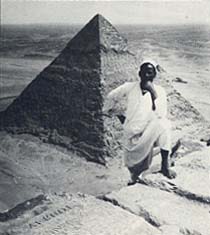
There are additional extant accounts of 046travel in the lands of the Bible and beyond. In the fifth century B.C. Herodotus, “the Father of History,” described Egypt as the gift of the Nile. He talks of the overflow of the river’s banks, of crocodiles, hippopotami and the building of the pyramids under Cheops. General Marcus Vipsanius Agrippa (63–12 B.C.), deputy to Augustus Caesar, constructs a map of the world based on military surveys of roads in the Roman Empire. Information about many lands was gathered by scholars, such as Pliny the Elder and Ptolemy (Claudius Ptolemaeus) in the first and second centuries A.D., but none of their reports can be considered travelers’ guides.
It was in the days of Constantine the Great (about 280–337 A.D.), with the rise of Christianity, that “guidebook” literature as such began to appear. Theodoric, who came to the Holy Land centuries later, during the Crusader period, expressed the situation best, perhaps, when he said in 1172:a
“In the old times the land of Canaan was provided with plenty of cities, towns and villages, and in old times everyone knew the whereabouts of these cities as well as their names. But for the people of the present day who are from abroad and did not live there from birth all but a few of the place-names are unknown. … ”
The earliest existing record was written in 333 A.D. by a Christian pilgrim known only as “The Bordeaux Pilgrim.”b It gives the distances between cities and mentions the number of stations and halting places en route. In his account of the Holy Land, the Pilgrim adds short descriptions of the places he passes through and refers to the Biblical events that occurred in them.
Some pilgrims kept diaries while they traveled; others recorded memoirs after their return, or spoke of their adventures while a listener noted their stories. Not every pilgrim wrote, and much of what was written did not survive. Part of this literature is merely descriptive in nature, but some is clearly intended to supply information for others. Says St. Jerome when he relates Paula’s journey, taken in 305 A.D. “For I have not set out to write a travel book,” which means that others have.
Jewish travel literature abounds mainly after the Crusader period, although Jews never stopped coming to pray at the holy places after the destruction of the Second Temple. During the first millennium A.D., many Jews still lived in the Holy Land and could provide 047shelter and guidance for their brethren. But the near eradication of the Jewish community by the Crusaders necessitated travel advice.
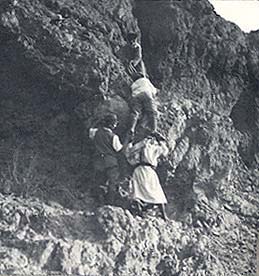
While most Christians, as well as Ashkenazi Jews, wrote about the holy places, Sephardi Jews recorded everything, from boat schedules to the customs of different peoples. One of the most interesting accounts, from the 1160s, was written by Benjamin of Tudela. He notes the number of Jews in different places, names their leaders and describes the economic situation of various countries. Benjamin visited Paris, Rome, Constantinople, Baghdad and Cairo. He even reached India and Ceylon.c
It is the 19th century, when events and inventions created the travel revolution, which gave birth to the modern guidebook. Interest in the Levant was aroused by Napoleon’s invasion of Egypt in 1798; industrial wealth bred a new leisure class; steam replaced the sail to make seafaring safer. Writers, painters, photographers, missionaries, scholars, archaeologists and plain adventurers as well as royalty—all went East. The Bible and Josephus—even with the help of dragomans—were no longer adequate as guides, and by the 1840s commercial “Hand-Book[s] for Travellers” appeared: John Murray’s firm in London and Karl Baedeker’s in Leipzig combined scholarly treatises with practical advice for the ordinary person.
From the time when one of our ancestors tamed the first beast of burden to about a century ago, the average distance one could trek in a day was 20 miles. This was true when, perhaps in the 1800s B.C., Rebekah “rode upon the camels” (Genesis 24:61), as well as in 1867 A.D., when Mark Twain mounted his horse Baalbek (so named “because he is such a magnificent ruin”). Now the train, automobile and plane, not to mention the hotel, have simplified travel. Awaiting you are the splendid monuments of Egypt, the romantic ruins of Jordan, and the beautiful landscape of Israel where the very place names conjure images from our Biblical heritage. Go. Enjoy. Even if your guidebook is less than perfect.
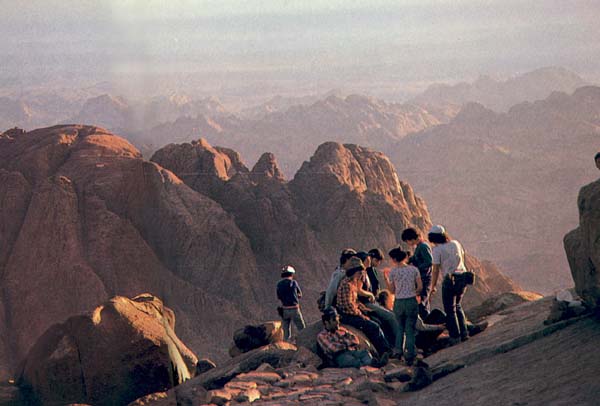
Before embarking on the search for the book that will be right for you, decide what kind of information you need. Will you be traveling with a group? Do you plan to drive? Will you require accommodations? Are you a walker? Will you have time, before you go, to do some background reading?
048
Egypt, Israel and Jordan were the crossroads of ancient civilizations. Their histories are long and complicated. When writing about these countries as they were, and as they are today, an author faces mountains of facts and figures. A good guidebook introduces order into the profusion of information, then makes the information easy to find and to use. So look for an extensive index, legible maps and site plans, and a detailed chronology. If you plan to walk a lot, don’t buy a tome you’ll tire of lugging around. Price should not be a major consideration—think of how much the trip will cost anyway. If you are trying to choose between two books, compare how a specific site is described in each.d In books printed outside the United States, the date of publication is often a mystery. The word “new” on the cover means nothing. Check the last date mentioned in the chronology and you’ll know when the book was written. Some guides list sites from “A to Z” which makes a name easy to find, but you might not know what else is in the neighborhood. Others suggest travel routes—a method I prefer—but such books must have a detailed index.
Books published under well-known trade names—Baedeker or the Blue Guide—are mostly reliable even if they may lack in charm. Guides written by natives, long-term residents or people with a “mission” may be more interesting, but be sure you know what you are getting. This is especially problematic when the subject is Israel, a subject few people are able to approach without some emotional baggage. If the words “pilgrims” or “Holy Land” appear in the title, chances are that the book’s emphasis is on Christianity. The use of “Judea and Samaria” versus “The West Bank” separates the hawks from the doves in modern Israel, and the author’s stand on Arab-Israeli affairs may be reflected in the chronology for the year 1948: Did “hostilities break out” or did the Arab states “attack Israel”?
Remember: If your heart is set on a specific book, look for it early so that you have a chance to order it if it isn’t in the bookstore. And even if you don’t plan to travel, some guidebooks offer fine reading for the “armchair” adventurer.
Since one “ideal” book does not exist, you might consider buying a couple that complement each other. Bon voyage!
Note: In the following reviews, a scale for quick comparisons is used, with five as the highest rating.
Israel
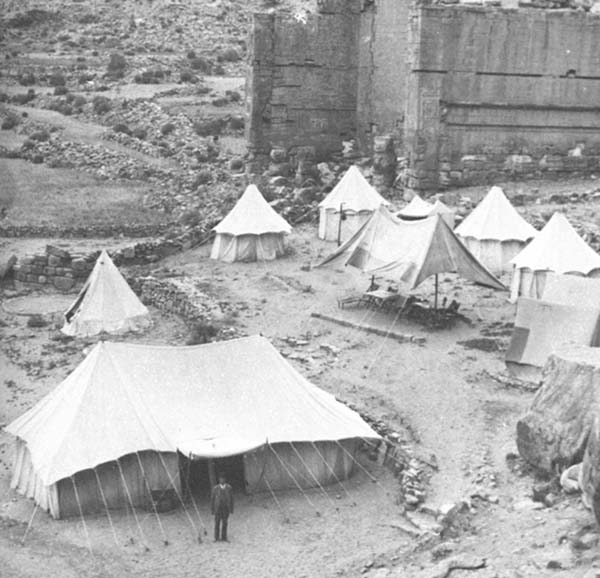
Baedeker’s Israel
Dr. Otto Gartner
(Englewood Cliffs, New Jersey: Prentice-Hall) 286 pp., $12.95
The Baedeker name has been associated with guidebooks for over a century and a half. In some aspects the current volume follows the grand tradition: It contains a detailed index, some 90 maps and site plans plus a large detachable road map (scale 1:600,000) and an extensive chronology. The book is enhanced by over 200 color photographs and is easy to use. It also has several good introductory essays and a practical information section that lists guest houses in kibbutzim, camping sites, beaches, and tells all about travel documents, weather and clothing. While tourist information offices are listed with telephone numbers, there are not a lot of details about hotels and restaurants, and their phone numbers are not given. Place names are arranged alphabetically, from Abu-Gosh to Zippori.
The publication date isn’t mentioned. The word “new” on the cover therefore means little. The last event described in the chronology occurred in 1981, and one may assume that the book appeared in 1983. Recent archaeological information is not included in the book, which confirms the 1983 hypothesis.
There are many errors in the guide, perhaps because it was translated from German. (Transliteration of Hebrew and Arabic is complicated enough without adding another language in the middle.) Thus we find “Ephraim Valley near the station” instead of the “Rephaim Valley near the train station”; on one page we read of “King Hezekiah,” two pages later we come across the “Hiskia [Hezekiah’s] tunnel.” The information about the Hurva Synagogue is also incorrect.
Despite the errors, this is still an attractive and practical all-purpose guide.
5 Index
5 Maps
5 Site Plans
5 Chronology
4 Essays
4 Practical Information
2 Hotels
2 Restaurants
4 General Appearance
Bazak Guide to Israel
Anthony S. Pitch, Alec Israel, Ze’ev Boverman, Amnon Ahi Nomi
(Jerusalem: Bazak Israel Guidebook Publishers Ltd., 1985; Distributed by Harper and Row) 480 pp., $11.95
“Israel’s own best selling guide” begins with several essays on history, the State of Israel, communities, religion and a short chronology. It has 24 consecutive maps, 24 suggested car trips and several walking tours in Jerusalem. The book is filled with practical information, from conversion tables to clothing sizes. Camping sites, spas and hotels are listed, and telephone numbers are usually given. Restaurant names appear without evaluation. A most welcome—and rare—feature in the book is a listing, by number, of the public buses that stop next to most locations.
The index in not very detailed. The Cardo is in it, but the Burnt House and the “Israelite Wide Wall” (Broad Wall) can only be found by reading—or walking—through Walk One in Jerusalem. The Nea Church is mentioned, but without any dates or other clues as to what it is. And while superlatives should be kept to a minimum in guidebooks, surely one could have been used to describe the Church of St. Anne. In general, site information is brief, yet accurate. While all guidebooks include a walk through the Christian holy places in Jerusalem, and most mention some sights in the Jewish Quarter, the Bazak Guide also features a long and interesting walk through the Moslem Quarter. Archaeological data is up-to-date.
This is a good all-around book.
3 Index
5 Maps
0 Site Plans
2 Chronology
4 Essays
5 Practical Information
5 Hotels
3 Restaurants
2 General Appearance
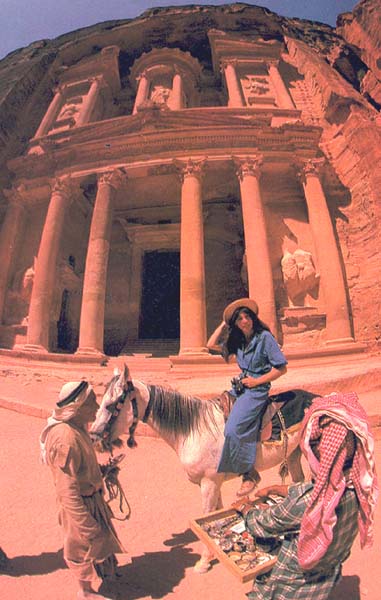
Berlitz Jerusalem and the Holy Land
Tom Brosnahan
(Lausanne, Switzerland: Macmillan, 1984/85) 178 pp, $4.95
A minibook. Small in size, limited in information, it is probably useful for the traveler who can only spend a couple of days in the country. Nearly half the book consists of color photographs; there are several detailed city maps. Sixty pages of text are devoted to Jerusalem, ten deal with the rest of the country. There is a good section with practical information, but nothing about accommodations. Recent archaeological finds are not mentioned.
5 Index
3 Maps
0 Site Plans
0 Chronology
3 Essays
4 Practical Information
0 Hotels
0 Restaurants
4 General Appearance
050
Carta’s Official Guide to Israel
(Jerusalem: Israel Ministry of Defence Publishing House and Carta, 1983) 468 pp., $13.95
Both the Israel Ministry of Defence and Carta are well known for the quality of their maps, and this guide only confirms their reputation. A handy plastic kit holds two large maps (scale 1:250,000 and 1:100,000) and a gazetteer. Over 50 other maps can be found inside the book, illustrating climate zones, topography, political changes and more. The additional city and site plans are clear and legible, the chronology is easy to follow. There are essays about the history of the country, the people and the economy. Over 400 pages of the gazetteer make up “a complete alphabetical listing of every named site in the area under Israel’s jurisdiction.” From Abasab el Kabira to Zur Natan, every place name is followed by a concise description and by symbols indicating “Type of Settlement, Economic Branches, and Sites and Institution.” A symbol may be worth a dozen words; using one saves space. But there are over 50 different symbols in the book, and I, for one, had to constantly refer back to the key.
There is no practical information in this volume about visas, hotels or shopping, but its maps are superior to those of other guidebooks.
0 Index
5 Maps
5 Site Plans
4 Chronology
4 Essays
0 Practical Information
0 Hotels
0 Restaurants
4 General Appearance

Thornton Cox Travellers Guides—Israel
Maurice Rosenbaum
(London: Geographia, 1981; Distributed by Hippocrene, New York) 132 pp., $6.95
The book begins with a very useful general information section and ends with a good index. The few maps it contains are accurate and legible. There is no chronology, only a concise history of the land. Accommodations are listed by category, and there is no information about restaurants. Walking directions are somewhat vague, as is other travel information. On a suggested bus trip, for example, from Jerusalem to the Galilee via the Jordan Valley, several spots in Jericho are discussed without making it clear that these places can’t be seen en route from the bus.
Dates appear infrequently, and in general 051the reader is not given much information. What is there is often merely descriptive. The inner courts of the Armenian Quarter “occasionally suggest Utrillo”; not a word about the age of the community or any of its shrines. The book contains a few drawings and photographs. The latter are arranged in no logical manner: pictures of Jerusalem’s Damascus Gate and of Achziv in the Upper Galilee are displayed next to the text about Eilat.
4 Index
2 Maps
0 Site Plans
0 Chronology
3 Essays
5 Practical Information
3 Hotels
0 Restaurants
3 General Appearance
Fodor’s Israel 1985
Edited by Richard Moore et al.
(New York: Fodor’s Travel Guides) 355 pp., $13.95
The book does not have a chronology; instead it contains several essays about history and other aspects of Israeli life. The index is good, but there are only a few city maps and site plans. I also found the prose rather pedestrian—even Herodium sounded boring—but there are no glaring errors in the book.
While archaeology is not the book’s strong point, practical information is. The volume starts with a long section called “Facts at your Fingertips,” which lists camping sites, youth hostels and hospices, sports facilities and the highlights of Israeli nightlife! Even wines are discussed, and the intricacies of ordering a taxi. For every major city or region, there are detailed descriptions of hotels and restaurants; one only wishes phone numbers were included. There are also many suggestions on what to do, from shopping to museum hopping. All together, a very practical guide.
5 Index
2 Maps
1 Site Plans
0 Chronology
3 Essays
5 Practical Information
5 Hotels
4 Restaurants
2 General Appearance
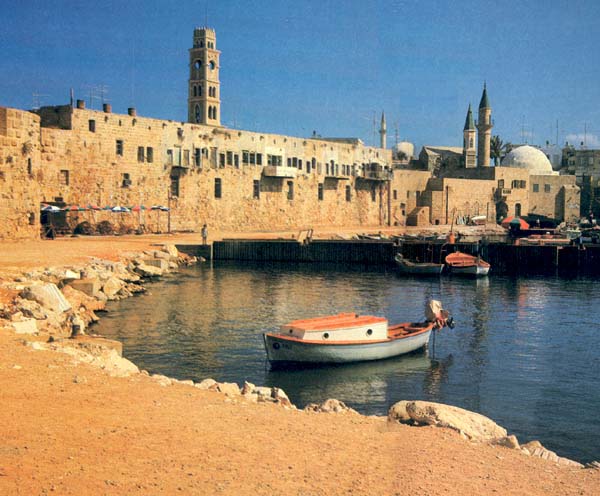
Frommer’s Israel on $30 & $35 a Day
Tom Brosnahan
(New York: Simon and Schuster, 1985) 345 pp., $9.95
If you are in Israel on a very low budget, this is a good book to have with you. It leaves no cheap bed unturned, nor does it skip a falafel 053kiosk. Bus routes, walking directions, meal prices, even detailed information about Jerusalem’s and Tel Aviv’s larger museums are all here. There is no index, which means leafing through a lot of pages to find what you want. The section on practical suggestions before you go lists tours, travel by boat and how to go to Egypt. Even if some of the data may be outdated, addresses and phone numbers are supplied throughout the book, and that makes verifying easy.
The chronology and essays are very short, and the few maps in the book are of poor quality.
Frommer’s Israel books started to appear on the market in 1964. The 1978/1979 and 1980/1981 editions, which I looked up, were written by Arnold Sherman and Sylvia Brilliant. The present one was written by Tom Brosnahan. Large segments of the current edition, especially background information, are identical in all three editions. And while it is understandable that there is no need to rewrite the history of Acre, for example, every few years, it is surprising that the only place mentioned in the Jewish Quarter in Jerusalem is the Old Yishuv Court—an enchanting museum—but no Nea, no Cardo, not even the four Sephardi synagogues. Poor on history and archaeology, Frommer is up-to-date on low-priced accommodations, as it claims.
0 Index
2 Maps
0 Site Plans
2 Chronology
1 Essays
5 Practical information
4 Hotels
4 Restaurants
2 General Appearance
Guide to the Holy Land
Eugene Hoade, O.F.M.
(Jerusalem: Franciscan Printing Press, 1984) 823 pp., $11.00
Hoade’s volume is a treasure trove filled with historical accounts, which a good index helps retrieve. While the quality of the road and city maps is only fair, the site plans are good. In a book written by a Franciscan, the emphasis is, naturally, on the places holy to Christianity; the 40 pages that are devoted to the Church of the Holy Sepulchre, its history and architecture, are almost a separate booklet. There is also extensive coverage of the Ottoman period (1517–1917), which most guides barely mention. The book contains no practical information.
The reports on Jerusalem’s Jewish Quarter—dates, buildings, events—contained many errors, which was disappointing. I also found it puzzling that there was no mention in this 1984 volume of the many archaeological discoveries of the past decade. Not a word about the Broad Wall or the Cardo. Then I realized that the present issue is an offset edition of the 1978 publication (which I own and have used in the past). This is not made clear in the “new” version. If some of the errors were to be corrected and recent archaeological data added, this would be one of the finest guides to the Holy Land.
5 Index
2 Maps
5 Site Plans
4 Chronology
4 Essays
0 Practical Information
0 Hotels
0 Restaurants
3 General Appearance
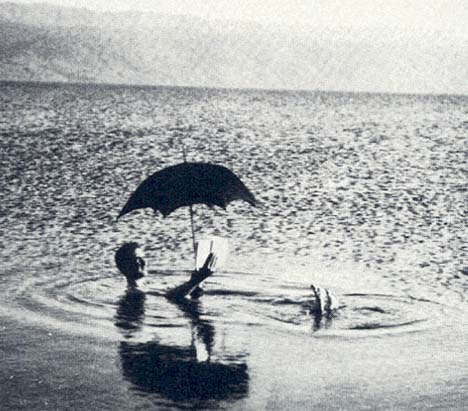
The Pilgrim’s New Guide to the Holy Land
Stephen Doyle, O.F.M.
(Wilmington, Delaware: Michael Glazier, 1985) 216 pp, $7.95
Stephen Doyle is professor of sacred Scriptures and Biblical preaching at Pope John XXIII National Seminary in Weston, Massachusetts. The book, meant to “transform a hectic tour into a grace-filled pilgrimage,” is crammed with reflections, prayers, Biblical quotes, and some 40 pages of hymns.
The ratio of information to “spirituality” is about 1:4. While the volume might be very helpful to many travelers, it is not a guidebook in the ordinary sense.
5 Index
1 Maps
2 Site Plans
2 Chronology
0 Essays
0 Practical Information
0 Hotels
0 Restaurants
4 General Appearance
A Pilgrim’s Interfaith Guide to the Holy Land
Franklin H. Littel
(Jerusalem: Carta, 1981) 151 pp., $7.95
Franklin Littel is professor of religion at Temple University. As a Methodist minister he is also active in ecumenical and interfaith affairs. The 50 sites he discusses in this slender volume appear in alphabetical order. Most places are described on one page. Thus the Chagall windows at the Hadassah Hospital synagogue and the Dome of the Rock each merit one page. Jerusalem’s Moslem Quarter gets but a paragraph that consists of a list of the churches located there and the Stations of the Cross. The book is handsomely designed, it has good maps, and charming drawings. The few errors—like the destruction of the First Temple in 520 B.C.—may well be typographical. There is no practical information in the book.
One unusual feature is a catalogue of persons memorialized in names of streets, settlements and institutions. You can look up Al-Khattab (Omar ibn al-Khattab) and find out that he was the “Emperor of the Believers” who conquered Syria, Palestine and Egypt in the early days of Islam, or discover that Kfar Gideon was named for the Biblical judge who delivered Israel from the Midianites. Almost a third of the book is dedicated to this listing, which does not leave much room for site information.
0 Index
4 Maps
0 Site Plans
0 Chronology
1 Essays
0 Practical Information
0 Hotels
0 Restaurants
5 General Appearance
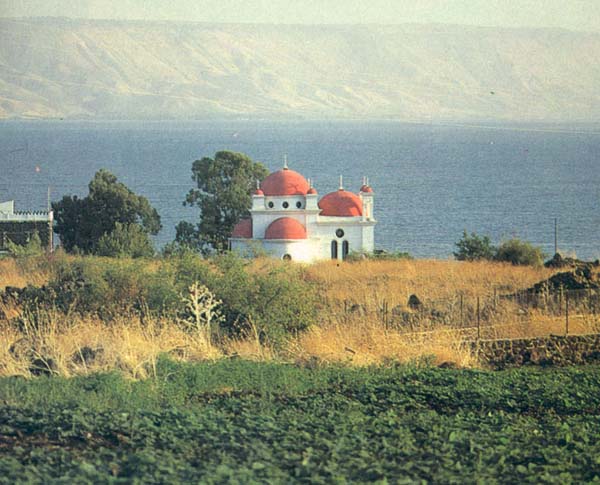
The Holy Land: An Archaeological Guide from Earliest Times to 1700
Jerome Murphy-O’Connor
(Oxford: Oxford University Press, 1980) 320 pp., $9.95
Jerome Murphy-O’Connor is professor of New Testament and intertestamental literature at the École Biblique et Archéologique Française in Jerusalem. He is an erudite author who writes with wit and precision; the title of his book states clearly what it covers. The first section is devoted to Jerusalem. The second deals with the rest of the land and sites appear alphabetically. Maps and numerous detailed site plans enhance the book; general road directions and opening times are also included. There’s some practical information in the volume.
One wishes that the author had dedicated more than eight lines to the Israel Museum, which contains many artifacts from the sites he describes, artifacts that bring to life the cultures of the peoples who had occupied the land in ancient times. Other archaeological museums are not mentioned at all.
Still, this is an excellent book, concise and easy to follow. It makes archaeology understandable and would make a good companion to any explorer.
0 Index
5 Maps
5 Site Plans
0 Chronology
4 Essays
2 Practical Information
0 Hotels
0 Restaurants
4 General Appearance
055
Israel Guide
Zev Vilnay
(Jerusalem: Ahiever, 1984) 604 pp., $9.95
Few people know the land of Israel the way Dr. Zev Vilnay does. The octogenarian, who has been guiding, teaching and writing about the country since his early days, bestows his knowledge upon the reader with love and with passion. The book is like a mini-encyclopedia, packed with information, citations and some 650 illustrations—site plans, drawings, and maps, including a 1:500,000 scale map. Flora and fauna, ancient tools, modern buildings, folklore—Dr. Vilnay has thought of everything. What is the length of the Old City’s Wall? Is Tiberias mentioned in the Gospels? What are the emblems of the Israeli police force, the phone number of Kibbutz Hagoshrim? All the answers are included in this volume.
One of the book’s main handicaps is that it only has a place-name index, and a lot of the information in the book is thus not easy to retrieve. The ignorance of the average walker is underestimated, and it is easy to get lost while looking for a spot “near” or “next to” some other landmark.
Don’t be disappointed if major recent archaeological discoveries, in Jerusalem and elsewhere, are not in the book. This 1984 volume is identical to the 1982 edition. The last preface remarks by the author that indicate revision are from 1975. Still, this is a major source of information, even if a more updated guide is needed to accompany it.
0 Index
4 Maps
5 Site Plans
4 Chronology
5 Essays
4 Practical Information
3 Hotels
0 Restaurants
5 General Appearance
Israel, Egypt And Jordan

Baedeker’s Egypt
Monika I. Baumgarten
(Englewood Cliffs, New Jersey: Prentice-Hall, 1984) 384 pp., $14.95
An easy-to-follow chronology, a large detachable map (scale 1:100,000), and over 220 colored drawings, diagrams, maps and site plans, make this a volume that is easy to use and pleasant to look at.
There are many introductory essays. The Egyptian pantheon, from Aker to Werthekaw, is depicted in words and drawings; the royal cartouches are a delight. The ten plagues are listed, and Ramesses II is noted as the Pharaoh who, “without valid ground,” is often identified as the oppressor of the Israelites.
From the sun temples at Abu Gurbal to the unidentified pyramids of Zawiyat el-Aryan, sites appear in alphabetical order, accompanied by concise information.
While the book has an adequate section on practical information, hotels are merely listed by class, and restaurants are not mentioned.
Like most other guidebooks to Egypt, Baedeker suggests that for those going to Egypt for the first time, a prearranged tour might be the least frustrating way of seeing the country.
5 Index
5 Maps
5 Site Plans
5 Chronology
3 Essays
3 Practical Information
1 Hotels
0 Restaurants
5 General Appearance
Berlitz Egypt
Tom Brosnahan
(Lausanne, Switzerland: Macmillan, 1984/85) 128 pp., $4.95
The Egyptian version is similar to the one for Israel, except that site information is more evenly distributed. The book provides the minimal amount of facts for a hurried tourist.
5 Index
3 Maps
1 Site Plans
1 Chronology
3 Essays
4 Practical Information
0 Hotels
0 Restaurants
4 General Appearance
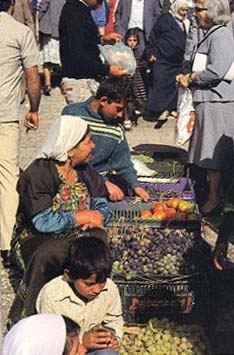
Blue Guide Egypt
Veronica Seton-Williams and Peter Stocks
(New York: W. W. Norton, 1983) 694 pp., $15.95
Packed with information, with many detailed maps (particularly for Cairo), the book has very good essays, especially on flora and fauna. History is made easier to follow with the help of a long chronology. The index, all 12 pages of it, is printed in different typefaces for people, ancient or new places, and so on. The problem with the index is that it assumes prior knowledge, and places are listed under city or region. I suppose if you don’t know enough to look for the Valley of the Kings under Luxor, you shouldn’t be going to Egypt in the first place, but I still prefer my index straight.
A special feature that I found only in this book is the large number of walking tours, accompanied by good maps, throughout Cairo, with the emphasis on Islam and its monuments and architecture. In fact almost a third of the book is devoted to Cairo.
The book contains useful practical information. Hotel names are given for different neighborhoods in Cairo, and for other cities. A few restaurants are also mentioned.
This is the book for anyone planning to spend some time in Cairo, especially those interested in Islamic architecture and history.
4 Index
5 Maps
4 Site Plans
5 Chronology
5 Essays
4 Practical Information
2 Hotels
1 Restaurants
3 General Appearance
Thornton Cox Travellers Guides Egypt
Penelope Turing
(London: Geographia, 1982; Distributed by Hippocrene, New York) 127 pp., $6.95
The book has no chronology. It discusses the history of Egypt in five pages. The few maps that appear in the book are clear, but there are no site plans. The book is illustrated with some color photographs and drawings. The index is easy to use.
There is not very much information on individual monuments, temples or museums, but what is there is clear and concise. The section on practical information has everything: from telephoning, to tipping, to toilets. Hotels are discussed in detail, and several restaurants are mentioned in the major cities.
You may wish to get another volume for history and archaeology, but this is a useful guide for the more practical aspects of traveling in Egypt.
4 Index
2 Maps
0 Site Plans
0 Chronology
2 Essays
5 Practical Information
4 Hotels
3 Restaurants
3 General Appearance
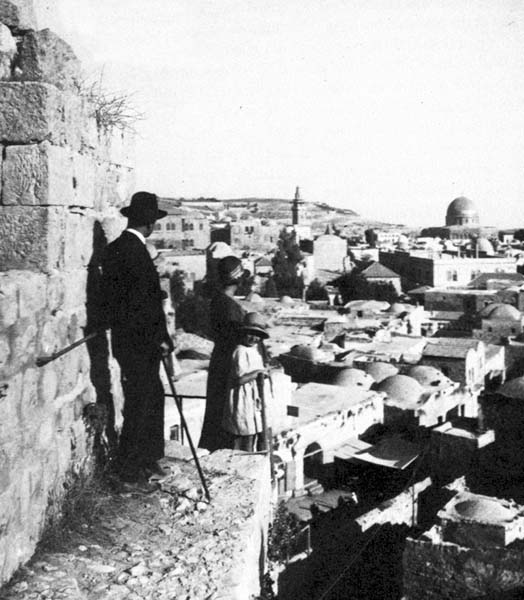
Fielding’s Egypt and the Archaeological Sites
A. Hoyt Hobbs and Joy Adzigian
(New York: William Morrow, 1984) 256 pp., $7.95
A good index, a very short chronology, simplified maps and hardly any site plans or photographs. Yet this is a book with a lot of 056other worthwhile information. Site descriptions are brief, but adequate. There are detailed listings of hotels and restaurants, with the authors’ opinions clearly stated (but no phone numbers). The chapter on practical information is short, yet it covers most of the questions a traveler might ask.
The book was written by a husband-and-wife team who care very much about the country, and their personal style comes through. They touch upon many out-of-the-way places that someone might wish to visit on his own. The book mentions Biblical events in a couple of places, which is nice even though most of us know that the Exodus left no impressions on ancient Egypt. This is a book I would take to Egypt.
4 Index
2 Maps
1 Site Plans
2 Chronology
2 Essays
4 Practical Information
5 Hotels
4 Restaurants
3 General Appearance
Fodor’s Egypt
Kay Showker
(New York: Fodor Travel Guides, 1985) 256 pp., $12.95
A poor index, which makes information hard to find, and only a few maps and site plans, but otherwise a very good book. “Facts at Your Fingertips” includes all kinds of practical tips; it has interesting essays on history and other topics, and additional reading suggestions. The introduction to the Cairo Museum prepares you for what to expect—both the good and the bad.
This is by far the best guide to hotels and restaurants in Egypt. Ms. Showker lists dozens of hotels, describes and classifies them, and includes their phone numbers. As for restaurants, you could stay in Cairo for three months and not have to eat twice in the same place—if you follow her recommendations.
About three-quarters of the book is devoted to actual tours. Various routes are suggested, and while site information is not too detailed, it is well written. One just wishes the index were less complicated so that all of the facts in the book would be easier to find.
In the practical information section there are sensible suggestions for women traveling alone, a timely topic.
2 Index
2 Maps
1 Site Plans
0 Chronology
4 Essays
5 Practical Information
5 Hotels
5 Restaurants
3 General Appearance
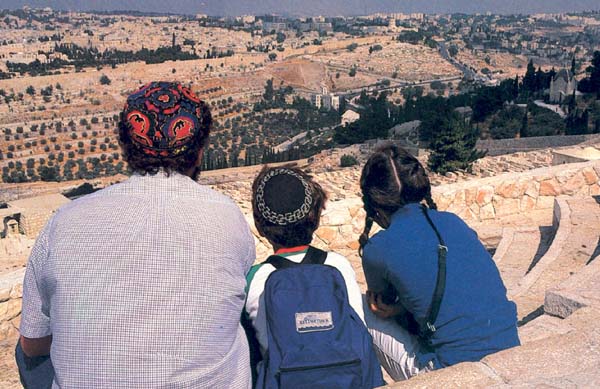
057
Let’s Go 1985 Israel & Egypt (Including Jordan)
Edited by Martha Hodes
(Cambridge, Massachusetts: Harvard Student Agencies, 1985) 413 pp., $8.95
Let’s Go is a series of budget guides, revised and updated almost every year by globetrotting Harvard students “traveling on a shoe-string.” Their books are geared to the young, the adventurous and the relatively poor. This volume is an idea whose time has come—more or less. While it is fairly easy to go from Egypt to Israel, and vice versa, when Jordan is added to the itinerary, passports, visas and border-crossings do become a problem. Let’s Go helpfully depicts every nightmarish scenario, and offers possible solutions.
The practical end of the book is excellent, from how to avoid pestering males to which beaches one can sleep on, safely, by the Red Sea. Bus and train schedules, cheap stand-by flights, least-expensive youth hostels and eating establishments—dozens of them all over—and many places off the beaten track that most tourists would not get to. The lack of a chronology, the minimal index and the shortage of maps can be overlooked because of the multitude of facts about the “where” and the “how.”
The background and historical essays do not measure up to the rest of the book. Perhaps a couple of students should spend some time at Widener Library and avoid many unnecessary errors. According to the book, for example, “the British withdrew from Palestine and called upon the newly formed United Nations, which then voted to partition Palestine into a Jewish and Arab state. … ” In fact, the British left nearly five months after the November 29, 1947, United Nations resolution. (The sequence is established correctly elsewhere in the book.) Or Eilat flourished “until the end of the Byzantine rule, when it was conquered by Saladin.” The Byzantines were defeated in the 630s; Saladin was born five centuries later. Reading about Acre one gets the impression that its history began with the Crusaders; no mention is made of its early days under the Canaanites, Phoenicians or Romans, to mention but a few of the city’s occupiers. The Umayyads, whose reign ended in 750 A.D., could not have built castles in Jordan in the 17th century, and the Romans, who disappeared from the local scene c. 340 A.D. could not have “exchanged marriage vows here [at the Nymphaeum in Amman], a thousand years ago.”
So get another guide for historical facts, but for excellent lasagne in Amman, for the cheapest kushari—a peppery rice, lentil, macaroni and fried onion mixture—in Cairo, or for the best hummus in Jerusalem, it’s worth investing $8.95 to take Let’s Go along, especially if you are under 30.
3 Index
2 Maps
0 Site Plans
0 Chronology
3 Essays
5 Practical Information
5 Hotels
5 Restaurants
2 General Appearance
Carta’s Map and Guide to Israel and Jordan
Robert D. Kaplan
(Jerusalem: Carta, 1980) 48 pp., $8.95
“Together, the nations of Israel and Jordan form the Holy Land,” says the introduction to this booklet, which provides thumbnail sketches of historic sites in both countries. Kerak is described in ten lines, Jerusalem in nine, Caesarea in seven. A separate 1:350,000 scale map comes with the book, which also contains very good maps, site plans and handsome drawings.
There is no practical information in the book.
0 Index
5 Map
4 Site Plans
0 Chronology
0 Essays
0 Practical Information
0 Hotels
0 Restaurants
5 General Appearance
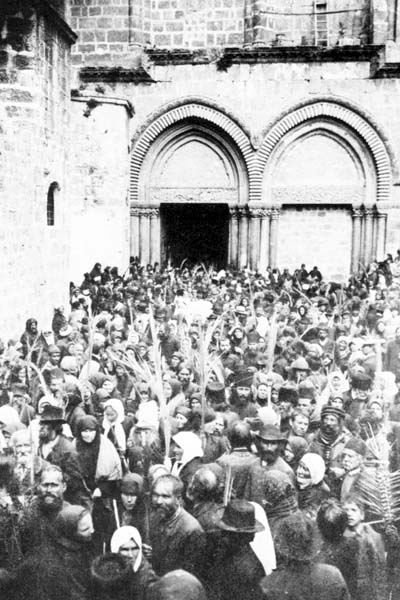
Fodor’s Jordan & The Holy Land
Kay Showker
(New York: Fodor Travel Guides, 1985) 244 pp., $12.95
The book is oriented to Christian travelers who start their journey in Jordan. The section about the Holy Land is really about East Jerusalem and the West Bank, and the guide itself suggests that for a prolonged visit to Israel, an additional volume should be used.
The information about Jordan is most useful, especially since there are not too many guides to the country. There is a short chronology, “Jordanian and Biblical History,” several up-to-date essays and a useful index. There are only three maps in the book, and one is of Jerusalem as it was in the time of Jesus. There are no site plans. A few nice photographs of Petra and Amman are displayed next to the text about the Old City of Jerusalem.
The practical advice covers everything how to ride a camel, where to shop and how to cross the Jordan. (It was easier in Joshua’s day!) Hotels and restaurants are listed with addresses, telephone numbers, prices and comments. A very handy guide written with a personal touch.
4 Index
1 Maps
0 Site Plans
4 Chronology
4 Essays
5 Practical Information
5 Hotels
5 Restaurants
3 General Appearance
Introducing the Holy Land
J. Maxwell Miller
(Macon, Georgia: Mercer University Press, 1982) 185 pp., $13.95
Dr. J. Maxwell Miller teaches Old Testament, Israelite history and archaeology at Emory University. His book, intended for “first-time visitors to the Holy Land who … do not have time for extensive reading in advance,” is really an introduction rather than a guide. It includes a chronology that is almost 190 pages long, which lists events and rulers in Egypt, Mesopotamia, Persia and other places, as they affected the lands of the Bible. (The book includes tours in both Israel and Jordan.) Thirty-one maps, some of which are historical or geopolitical, are clear, as are the site plans. The black-and-white photographs 058are poorly reproduced in what is, otherwise, a most attractively designed volume. Quotes and inscriptions—Eleazar ben Ya’ir’s speech at Masada, the Mesha stele—are set in special frames, and there are suggestions for further reading. A chapter on rediscovering the ancient world would have been enriched, I believe, by including at least one of the many reports by Jewish travelers, such as Benjamin of Tudela in the middle of the 12th century.
The author suggests five routes, two in Jordan, three in Israel. One moment I was in Jerash and Nahr ez-Zeraq, and on the same page I found myself in Jerusalem with nothing but a delicate decorative line to suggest a change of place. Were it only so easy! The book contains no practical information.
It was surprising to find no notice in the book, published in 1982, of excavations in Jerusalem by Nahman Avigad, Benjamin Mazar and Yigal Shiloh.
4 Index
5 Maps
5 Site Plans
5 Chronology
5 Essays
0 Practical Information
0 Hotels
0 Restaurants
5 General Appearance
Early Guidebooks In Facsimile Editions
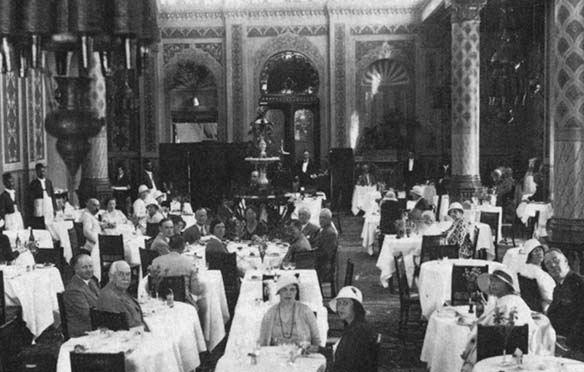
In recent years, Israeli publishers Ariel and Carta have issued facsimile editions of several early guidebooks, such as W. H. Bartlett’s Jerusalem Revisited (1855) and J. E. Hanauer’s Walks in and Around Jerusalem (1926). Baedeker’s Jerusalem and Surroundings 1876 is only part of a larger volume that dealt with Syria and Palestine. It is too bad that the introduction was not reprinted, full, as it were, of “practical information” about horses and dragomans, what to wear (“dress-clothes are quite unnecessary,” but one’s tailor should be told to sew the buttons “extra strong for repairs are dear in the East … ”), Turkish baths and a chapter on “Intercourse with Orientals”!
Here is a quote from the 1876 Baedeker (from the facsimile edition issued by Carta [Jerusalem, 1973]). The Jewish Quarter in Jerusalem is “a somewhat dirty street with brokers’ stalls, shops for the sale of tin-ware manufactured by the Jews, and several uninviting wine-houses. Near the end of the street we turn to the left and reach the Synagogues, none of which are interesting.”
Facsimile editions, like the original old guidebooks, are a mirror of their time, interesting historically, even amusing. They make for fine souvenirs but are not too useful today.
The black-and-white photos in this article and on the cover are from The Matson Collection in the Library of Congress, courtesy of the Episcopal Home, Alhambra, California.
When God said to Abraham lech lecha: “Get thee out of thy country … unto the land that I will show thee” (Genesis 12:1), the Lord acted as the first known guide. Abraham then “departs” out of Haran, “passes through” Shechem, “pitches his tent” south of Beth El, and “journeys” to Egypt and back. The Bible of course is full of people going places without, as far as we know, the benefit of guidebooks. Yet it is from the most famous journey in antiquity, the Exodus, that we have, if not quite a guidebook, at least a travel […]
You have already read your free article for this month. Please join the BAS Library or become an All Access member of BAS to gain full access to this article and so much more.
Already a library member? Log in here.
Institution user? Log in with your IP address or Username
Footnotes
John Wilkinson, Jerusalem Pilgrims Before the Crusades (Jerusalem: Ariel Publishing, 1977), p. 15.
